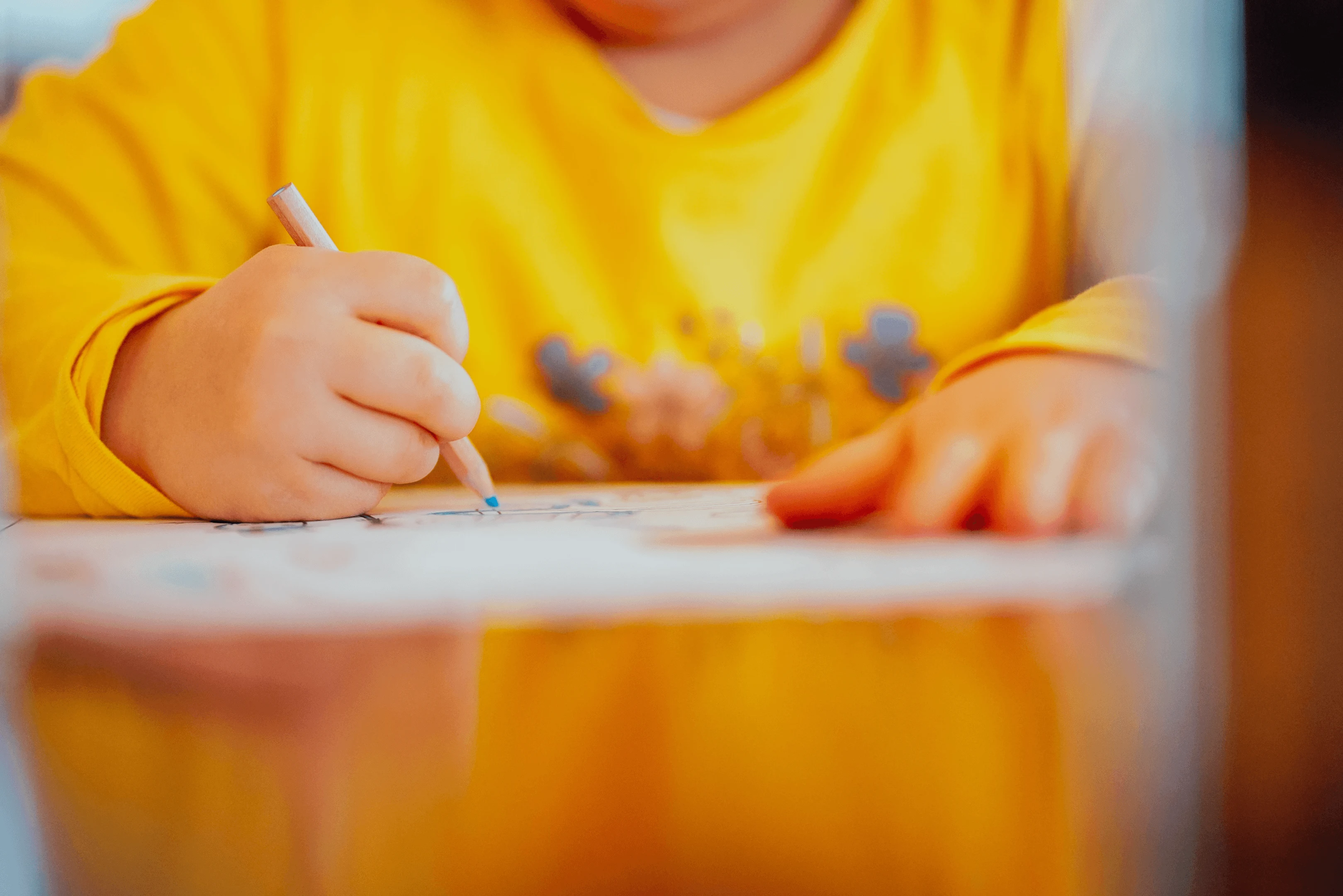
This article will show you how to use a simple whiteboard and marker pen to play a drawing game that can be developed and extended to use at any level or any age to practice and improve your maths skills.
I developed this game when I taught year 2 so the children I was working with were aged six to seven years, but you can adapt the principles and use it with younger and older children. Since then, I’ve shared this idea with many other teachers and they have all been amazed with the way the children engage enjoy the game and… more importantly…. the results they’ve had.
What are the Benefits of Drawing Games?

I’m a visual learner. That simply means I prefer to see things when I am learning rather than just hear about them, as it helps me to remember them. This game is very visual so it really helps children to process the information. The act of writing the numbers down without any pressure also makes sure that deeper learning is happening.
To read more about the benefits of learning mathematic concepts through games, visit this website.
When you start to play, you will see that this activity is great for encouraging all aspects of numbers, but the very best thing is, it is fun so the children won’t realize they are learning. They will think they are playing a game and through play, real learning occurs.
It’s important to communicate to the players that it is okay to just have a go as you play. It really doesn’t matter if you get something wrong as we are all learning together. You can easily rub out your first answer on your whiteboard and have another go.
Can Anyone Play?
Yes. You can start this activity with any number, depending on the stage your children are at.
I used to play this at the beginning of every school day. We started off with a single-digit number and gradually built up until we were playing in a sophisticated way with two-digit numbers and lots of new concepts were added as we went along.
If you spend a few minutes playing every day, you can gradually increase the number of flashcards you use and the difficulty of them.
You will need:
A flip chart
A set of flashcards of increasing difficulty (see below)
A whiteboard, marker pen, and eraser for each player.
Ok… Are you ready to have some fun and play Number of the Day?
I will use number five to demonstrate but you can start at number one and build up to any number you want to or if your learners are older you may want to start with a two-digit number.
1. Number Formation (Flashcard says: Draw)
Before you start, give each child a whiteboard, pen and eraser.
On the flip chart, draw a large number five.
The first thing to do is draw the number of the day together, making sure we are forming it correctly. So for example, with the number 5, we would draw a line down vertically, curl around to the right to make a fat belly, and then put his hat on top (draw the straight horizontal line).
Make sure everyone has time to practice forming the number and give players time for another go if they don’t get it right the first time.
2. One More / One Less (Flashcard says: More / Less)
Ask everyone to draw the number that is one more than 5 on their boards. When everyone has had a chance, hold up the whiteboards for you to check they have written number 6.
Repeat, but this time ask them to write the number that is one less than five. Ask the players to hold up their boards and check everyone has written 4.
You can gradually increase the difficulty of this game. Ask for the number that is one more to begin with, but if the children find that too easy, increase it to two more, three more and build up to ten more.
Ditto with one less.
If they are finding it a challenge, practice counting by rote together along a number line until you find the right answer.
3. Double the Number (Flashcard says: Double)
This time everyone has to write down the number that is double five.
They can work this out any way they like. Some players will know the multiples of 5 and will be able to quickly work it out by counting in fives, other players may need to count on their fingers, and some players may need to draw five lines on their whiteboard and count them twice.
It really doesn’t matter how they reach the answer, but by asking everyone to hold up their whiteboard with their answer it will give you a good clue where the players are in their understanding.
You can use the Flipchart to show a few ways of finding double 5.
4. Halves (Flashcard says: Half)
This time the players have to work out what is half of five.
This can be more difficult so you may want to use this flashcard at a later date, depending on the stage our players are at.
Remind them that they are looking to work out what is half of number five and they can find out anyway they like.
You can remind them they have 5 fingers and see if they can split them in half.
Tip – I like to introduce this flashcard when I am working with even numbers first and move on to odd numbers later as they are more difficult to halve because of the one carried over.
Older players may be able to work out their answers in decimals.
5. Odd and Even (Flashcard says: Odd or Even)
This time, everyone has to write on their whiteboard if number five is an odd or even number.
As you are playing you can add a little jeopardy by seeing who can hold up their board first with the right answer.
The flashcard has the words odd and even on it so there is no pressure for players who struggle to write or spell.
Remind the players to start at number one and miss out on every other number. Alternatively, they can start at 2 and count up in twos.
This is really good practice for recapping the concept of odd and even. It only takes a minute, but practicing and problem-solving every day really helps to learn this concept.
6. Money (Flashcard says: Coins)
When you hold up the Money flashcard, the players have to draw the coins on their whiteboard that make five pence.
You can make 5p in any way you like. It could be five pennies. It could be 1 two pennies and three pennies, it could be 2 two pennies and one penny or it could be a five-pennnies piece.
Encourage the players who are quicker to find more than one way of making 5p.
If your players are working at a higher level, ask them to make 50p or £5
There is a lot of learning that can come from this flashcard. Give the players a little thinking time and if they get it wrong, it’s no problem. Just have another go.
7. Counting in 10s Multiplication (Flashcard says:10 More)
Just as with the flashcard for one more / one less, this time the aim is to find 10 more than your number.
If the players can count in 10s, let them practice rote by chanting 5, 15, 25, 35, 45, 55, 65, etc.
If they are not ready to do that, they can add 5+10 by counting on using their fingers or a number line.
I always let the players help one another when they are playing the number of the day. It’s often claimed that children learn 80% of everything they know from other children, so this is a great way of encouraging partnership working.
8. Addition (Flashcard says: Add)
This is where this activity is brilliant because everyone can play at their own level.
By giving the players a number of the day and a card that says add, they have to make their own addition sum using the number 5.
They can add any number to number 5 as long as they can work out the answer.
I have found by playing this game, that players are able to set themselves challenges at their own individual level.
Some of the more able players would add five to very large numbers, and others would add five to single-digit numbers, but they were all practicing their learning, using their thinking skills and having fun.
You can adapt this for older or more able players by giving them a sum with missing numbers using the number five, for example: 5 + ? = 75.
9. Subtraction (Flashcard says: Take-away)
Using the same principle as above, ask the players to make a sum using the subtraction symbol and the number five.
Again, players can all play at their own level.
They can write a simple sum such as 5 – 4 = 1.
They may choose to use minus numbers 5 – 10 = -5
This is a good opportunity to remind the players that there are different maths words that mean the same thing such as take-away, minus, subtraction, and less than. You can use flashcards with these words on too if you prefer.
10. Shapes (Flashcard says: Shape)
This time, when you hold up the flashcard saying Shape, the players have to think of a shape with 5 sides.
They can experiment by drawing on their whiteboard to see what they come up with.
This should lead to discussions about hexagons or even pentahedrons (3D shapes with 5 sides).
This flashcard doesn’t always work with larger two-digit numbers, and you don’t have to use it in every game, but you can adapt it to think about shapes with 5 sides or 5 corners.
It’s a great way of learning new and quite complex shape names in a fun way and with no pressure.
11. Write the word (Flashcard says: Write Me)
On the flip chart, write the number symbol for five (5).
Ask the players to see if they can have a go at writing out the word for five.
If some players are good writers and find this too easy, they can write the words for one more than five, or one less, or for multiples of five.
If you have players who struggle to write, let them have a go and then write out the word on the flip chart for them to copy. Practice makes perfect.
12. Multiplication facts (Flashcard says: Multiply x)
I’m sure you have got the hang of this now.
Players have to write out the multiples of the five times table.
They can keep going until they run out of space on their whiteboard.
For an extra challenge, ask the players to multiply another random number by 5 and show you the answer on their whiteboard.
13. Division (Flashcard says: Divide)
You can use this flashcard on different levels depending on your players.
Remind the players that divide also means to share.
Ask the players to divide 5 spots into 5 circles. (Draw 5 circles on their board and share out the spots). This can provoke a lot of discussion depending on their drawings.
With more advanced players, ask them to choose a number and divide by five.
(You could use calculators for the work on multiplication and division).
14. Random Facts – (Flashcard says: Fact)
This is my favorite flashcard because players always surprise me!
The players have to come up with a random fact related to number five – this can be absolutely anything.
The aim is to write or draw anything on your whiteboard as long as it is related to the number 5.
They might choose to draw 5 fingers or 5 toes. They may write High Five They might draw Lightening Bolt from the film cars with the number 5 on it. They can draw the Roman numeral for five, or draw five eggs in a nest.
It really doesn’t matter and there are no right and wrong answers.
It’s a smart and quick way of putting numbers into a real-life context.
I always like to choose a few interesting examples to talk about when everyone has recorded something as it’s a great way to end the activity.
As I play, I like to display the flashcards that we have used around the large number symbol on my flip chart. Then at the end of the game, I recap the flashcards and remind the players just how much they know, and how clever they are.
I don’t use every flashcard every day. Instead, I gradually build it up until we can practice lots of maths concepts in a relatively short space of time.
What’s more, the players are using lots of problem-solving skills, learning from one another, and having fun.
If you are working with much older players, you may want to add more difficult flashcards such as fractions, percentages, ordinal numbers or square roots.
Give it a go and see where the learning takes you.
If you enjoyed this activity and would like further ideas, try this link for further maths drawing games.
Have fun!
